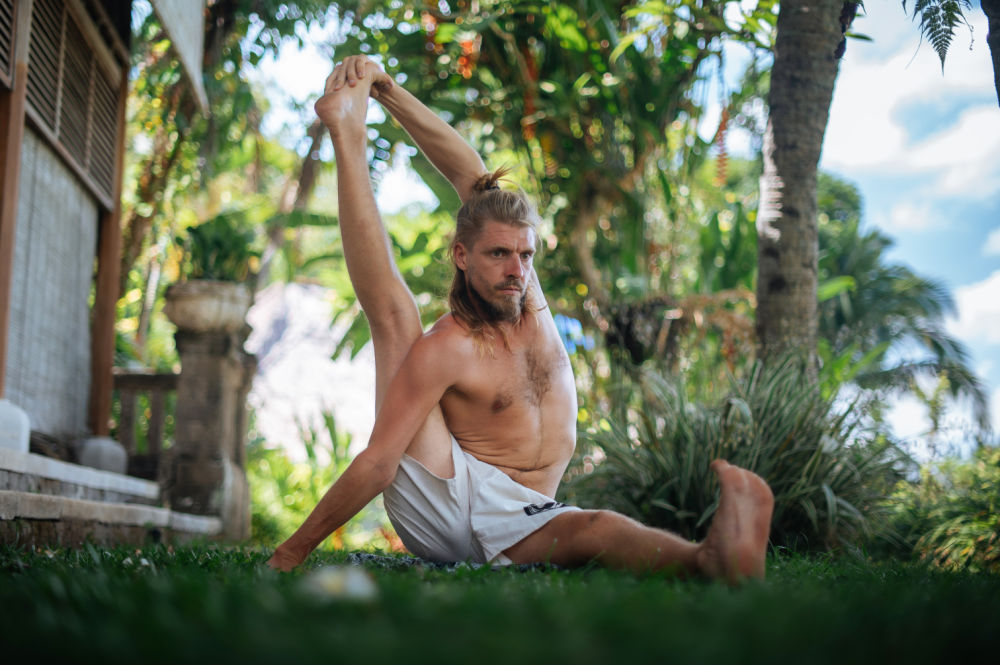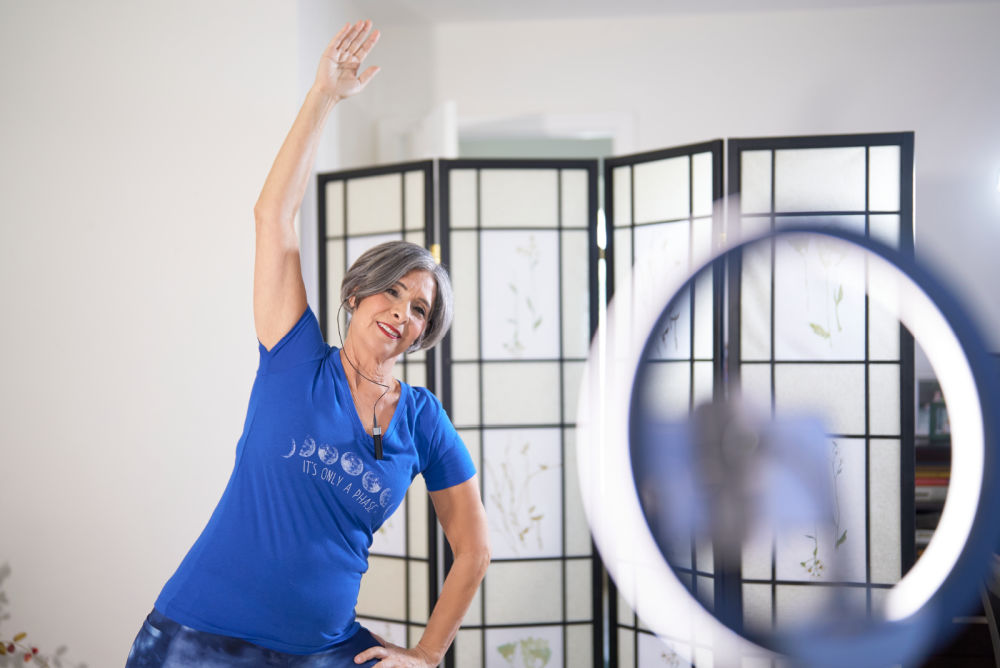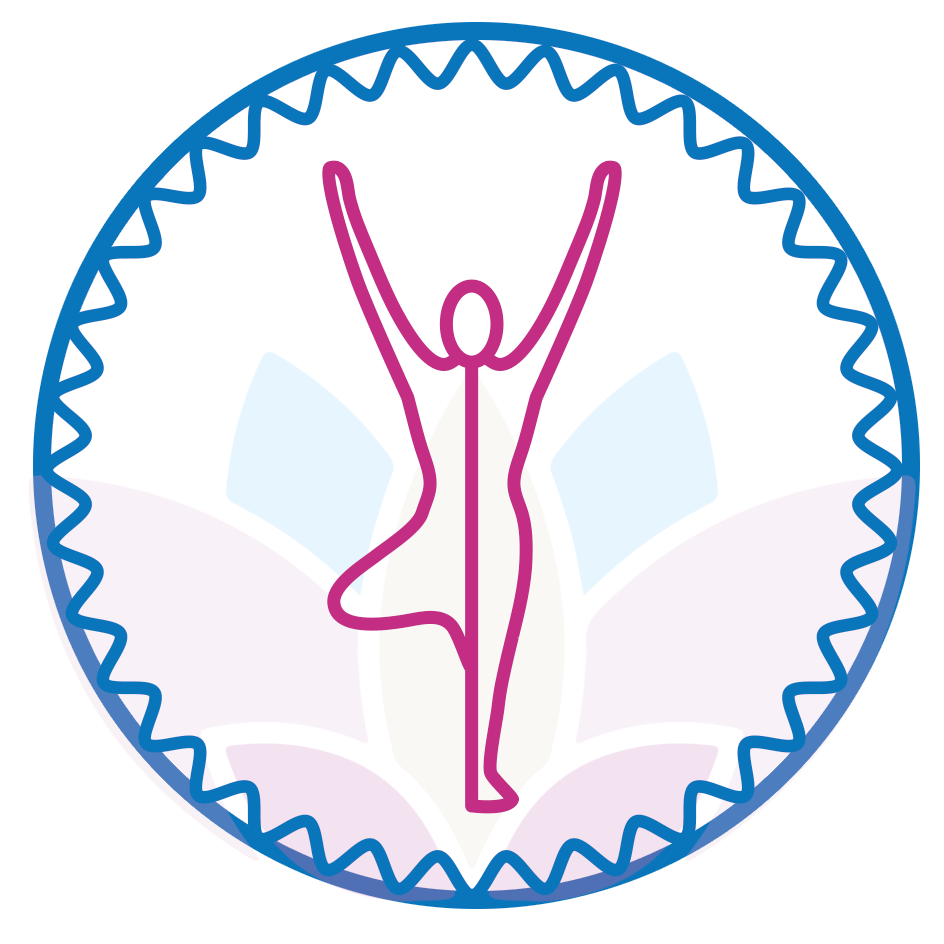
My Yoga Does Not Look Like This!
I remember when I was first trained as a yoga teacher in 2014 how surprised I was to learn that Yoga was originally developed for teenage boys training to be monks. Over time I really came to understand how important that fact is for my clients, students, and me. The women and men I teach are not 14-year-old boys with narrow hips and a great deal of flexibility preparing their bodies and minds for meditation. They are mostly aging people living contemporary lifestyles facing modern world stresses and accompanying aches and pains.
In the last ten years, yoga science has been greatly improved with an understanding of modern brain science and the role of the nervous system in healing. Somatics, a movement therapy that focuses on the nervous system is finding its place within modern yoga. It was life changing for me when I discovered Gentle Somatic Yoga. I have completed two certifications with its founder, James Knight. I did so, in part, because I could no longer practice nor teach the standard styles of yoga. It was not healing my aches and pains. My body and mind were leading me to try a different approach and according to Yoga Journal, I am not alone. “Somatics is a field of study and practice in the overlapping realms of bodywork, movement, and psychotherapy. It asks you to pay attention and to be guided by your internal experience.”
From a practical standpoint, this means I give students fewer alignment cues but more cues to notice what “a movement” feels like in their bodies. I also guide them to close their eyes as often as possible and to sense how the movements are feeling in their organs, connective tissues, nervous system, and muscles. They are taking a curious approach to their aches and pains. In this way, over time a person can release the fear which contributes to chronic tension. Through learning to be more objective and witnessing without creating a story, you will feel more confident, safe and empowered to move in ways that are more nourishing to your own body or “Soma”, (Greek word for the body).
For my students and me, this practice is life-changing. One of my students described it this way. “I have been practice yoga for more than 30 years. Over the years I have practiced with many instructors. Andrea began teaching us Gentle SOmatic Yoga two years ago. To be honest, at first I did not get it. The practice now for me is like receiving a great massage. Moving slowly in and out of poses, releasing muscles makes a lot of sense. Andrea has brought a new level of yoga to the club where I reside.”
According to a recent Yoga Journal article written by Tasha Eichenseher, for many people, it is the “first step toward releasing old memories and patterns, balancing your body and mind, getting in touch with feelings and intuitions, and ultimately moving toward a felt sense of being empowered and whole.”

Major Differences Between Traditional Hatha Yoga and Gentle Somatic Yoga
I am often asked by students to describe what Gentle Somatic Yoga is and how it differs from traditional yoga. Usually, I answer, “you need to experience this practice to understand the subtle but profound differences it can make in your health.”
A typical Gentle Somatic Yoga Class will have some very noticeable differences from a typical Hatha style yoga class including:
- No fast-moving flows. If you go too fast you are unable to take notice of places in your body that are numb, places where you are secretly holding tension, or if there are pivot points in your body that your movement defaults to repeatedly.
- Breath practices are seperate from the flows. The reason I do not direct your breath during the flows is that it is hard for your brain and your nervous system to focus on too many things at once. We allow the breath to be natural and do breathwork practices between the flows.
- Eyes are closed whenever possible. I will ask my students as often as possible to close their eyes during asana practice to shift their gaze inward.
- A pre-check and a post-check of your range of motion is part of the flow. That is done for several reasons. For one thing, the human brain likes contrast and for another, it encourages the act of witnessing the subtle, yet profound movements to safely release chronic tension.
- We limit the number of repititions and the length of time for holds. I will discourage clients from overdoing a pose by limiting both the length of time (3-4 seconds) and the number of repetitions to three or four to avoid overstretching muscle groups, which causes chronic tension.
- The word “stretch” is not part of the Gentle Somatic Yoga vernacular. We avoid the word stretch for a few reasons. For one thing, we are not trying to lengthen muscles beyond its natural range, we are trying to restore the natural muscle length by releasing tension. Also we do not want to create what is known as a “stretch reflex” where the brain sends messages through the nervous system to contract and tense up because of fear of over-stretching.
- We move organically between each asana sequence. By allowing the body to be rewarded with safe nourishing movement, it allows the nervous system to reset.
- Check-ins are done very frequently in a Gentle Somatic Yoga Class. The body scans are just as important as the movement patterns to allow the brain and muscles to begin to re-connect and communicate in a safe, more nourishing way.
Below find a two-minute video demonstrating some unique aspects of Gentle Somatic Yoga.
Gentle Somatic Yoga is Accessible to All Bodies
Whatever your age, body size, gender, current level of fitness or current experience of aches and pains, Gentle Somatic Yoga can provide you with a safe, healing practice.
This is truly a mindful movement practice that is innately therapeutic. I teach Gentle Somatic Yoga group classes twice a week. Tuesday’s flow is a Gentle Somatic Yoga class with HeartMath practices. On Thursdays, I mix in some Yin poses in which we explore our fascial tissues, our energy meridians, and other aspects of TCM. I also offer private instruction. Find out more about group and private online classes here.
My wish for you is to Age Vibrantly No Matter What You are Facing!
Namaste,
Andrea




Great article!